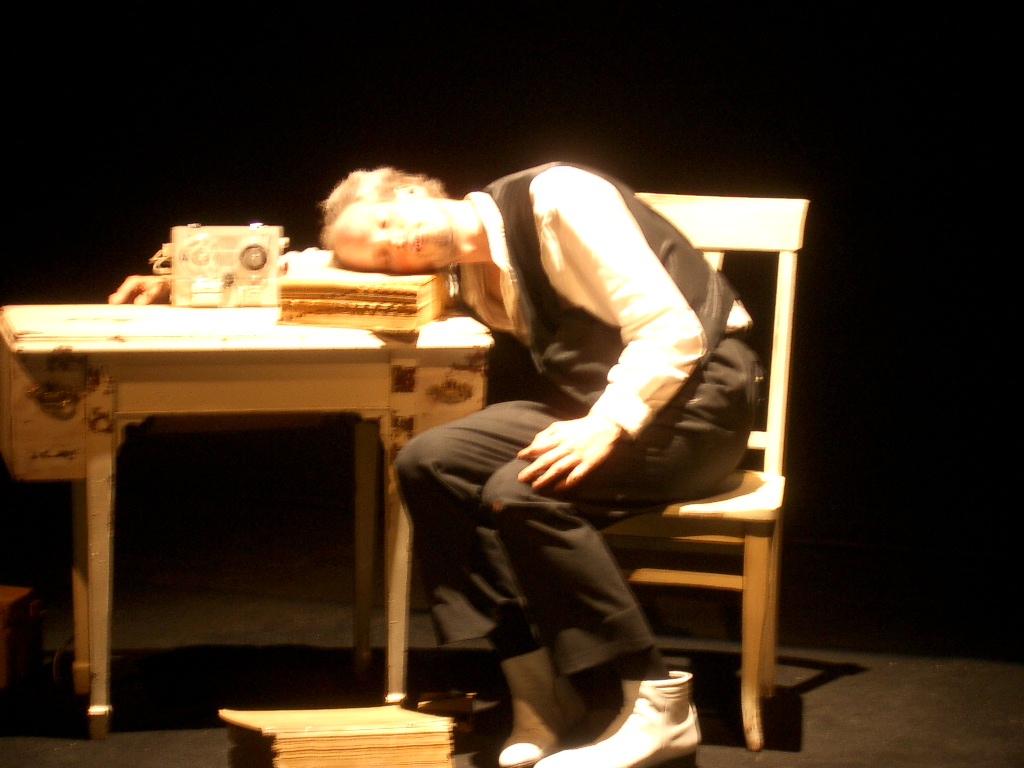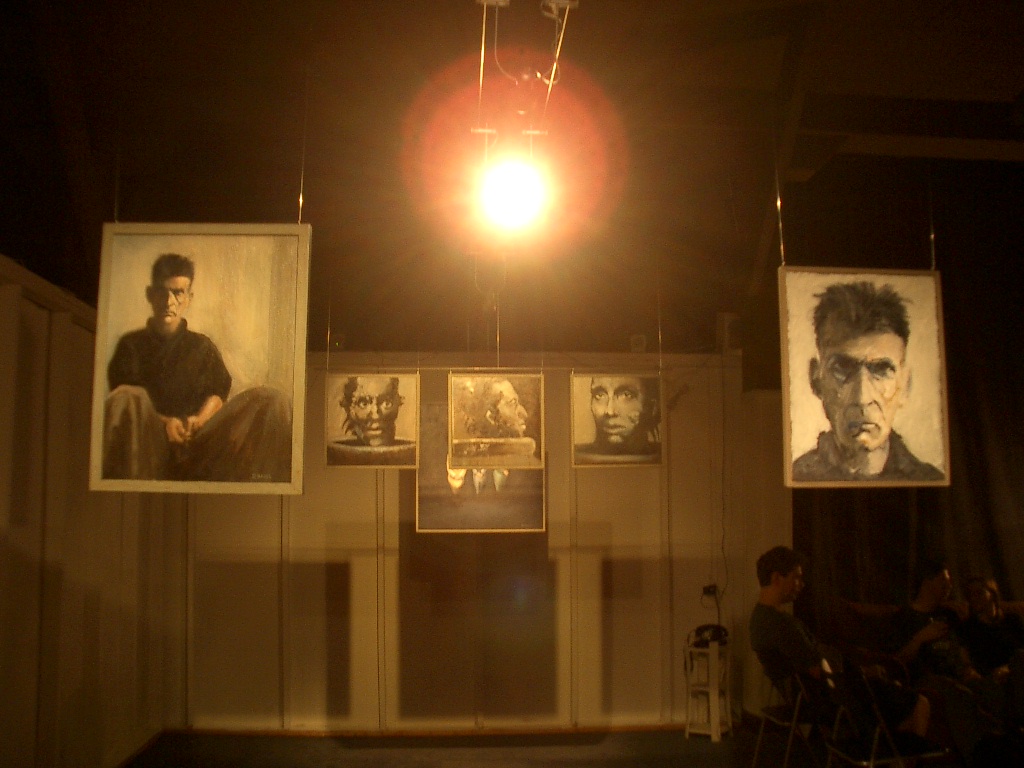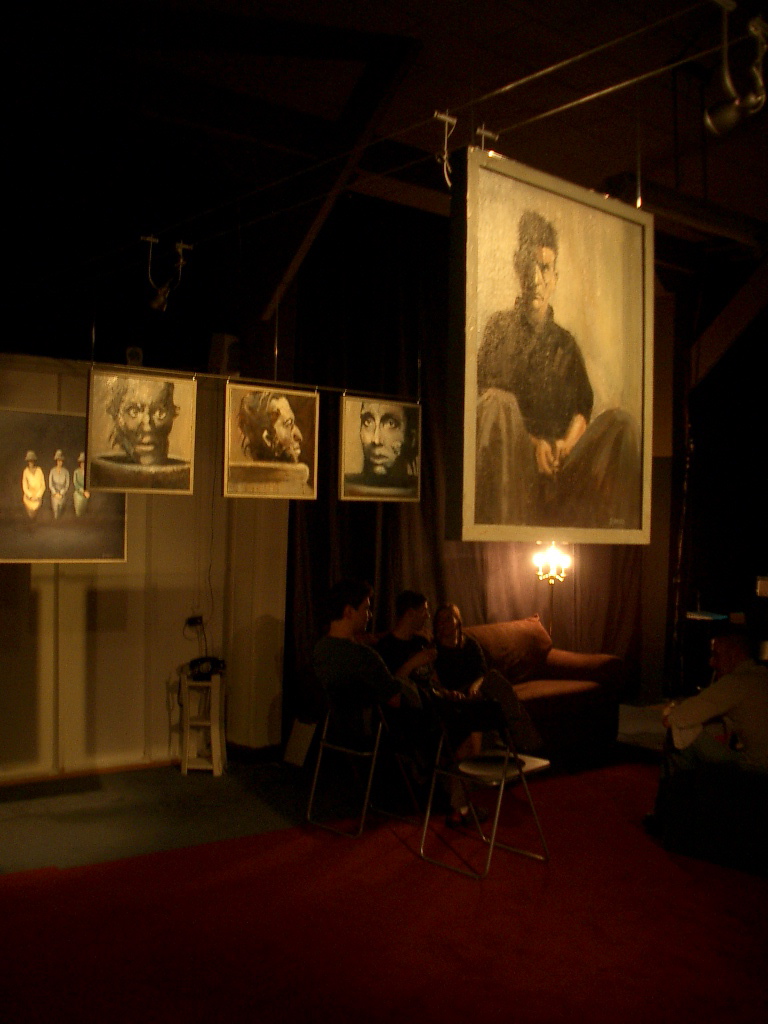

Krapps Last Tape Page
Krapp's Last Tape At Liminal Space, 2003.
Krapps Last Tape Page
Krapp's Last Tape At Liminal Space, 2003.
First performed in 1958, Krapp’s Last Tape signaled a new era for avant-garde performance and changed the face of modern theatre with its repetitive literary structure, vaudevillian imagery and stark postmodern perspective. Following on the heels of Godot, Krapp’s Last Tape marked a move in Beckett’s work toward the autobiographical. The play combines painfully hilarious comedy with delightfully gut-wrenching tragedy to reveal past and present moments from one man’s life. As a character, Krapp becomes the ultra-retro-modern Everyman who sometimes plays the clown slipping on a banana peel, and at other times plays the tragic hero battling his inmost dreams and fears.
Liminal’s interest in incorporating live sound and media into our performances made us particularly interested in Krapp’s Last Tape. It is one of the first 20th century theatrical works to incorporate recorded media as an essential part of its structure. Beckett masterfully unfolds his story through a dialogue between live actor and machine, where a single character depends on a reel-to-reel tape recorder to re-live his past. Together, Krapp and the audience experience his life for the first time through Beckett’s elaborate layering of live and recorded dialogue.
Krapp’s Last Tape was performed in July 2003 by Liminal sound and media designer John Berendzen with direction from Liminal movement director Amanda Boekelheide.
An installation at Liminal Space by painter David Hayes featured portraits of Samuel Beckett, as well as paintings inspired by his writings.
Press
Portland Mercury, July 31, 2003




